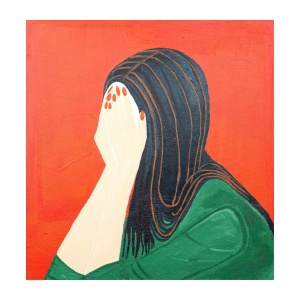Kuumar Shyam (Abu Dhabi)
When Maira (solo name and deliberately changed to preserve identity) decided to take art therapy as a young mother, she was not even sure if she needed it. Although she had an empty feeling, she could not exactly describe it.
“I decided to sign up because I remember that drawing and painting gave me a feeling of some kind of liberation and also because my parents allowed it,” says Maira, a homemaker and mother of a three-year old who has shown an equal amount of passion for drawing with crayons. “I want to give the best to my child and let her do whatever she wants to.”
After a few sessions, it turned out that Maira suffered from trauma and showed inhibited behaviour because her parents were restrictive without knowing during her upbringing.
“While art therapy can be a treatment, it can also help in diagnosis at times,” says her therapist on condition of anonymity. “And many times, cultural sensibilities play an important role. From her drawings, I noticed she had been a kind of mental block towards flashy colours because, knowing a bit about what part of the world she came from, glamorous lifestyle was not exactly looked upon favourably. The knowledge helped.”
Agrees Natalie Gomez Carlier, an Art Psychotherapist at Dubai-based ATIC Psychological and Counselling Centre. “The use of colour can be different if I come from a culture where colours are very common or the opposite. My use of paints or medium will be different. So as an [art] therapist, it's really important to take those differences into account,” says the specialist.
Gomez Carlier highlighted the importance of cultural sensibilities at the region’s first Art Therapy Conference organised recently by Abu Dhabi Centre for Sheltering and Humanitarian Care – Ewaa.
“A patient I had hardly used the red colour because it reminded him of violent memory. Sometimes, the same colour may signify different things in people from different cultures; in America, for instance, green is the colour for prosperity but in other cultures, purple or gold may signify it,” explains Gomez Carlier.
“So when we have different world views or different cultural views, it affects the way that we interact with people. It even changes the dynamics of relationships – including with your therapist.
“For example, in the West, the boundaries between patient and doctor are very rigid, very clear. And in collective culture [like in the GCC], the boundaries of relationships are more loose, more flexible. In the West, for instance, one wouldn’t think of inviting the therapist after therapy to social settings such as dinner or family events; however, in collective culture, this isn’t the case.
“Research shows the importance of any therapist in developing some awareness of the culture they are working with. So they don't make mistakes about how they perceive the world,” she adds.
Culture influences things like how mental health is perceived. In Maira’s case, her mindset was considered a sign of weakness, and a dependency on the family rather than herself was considered good. By finding someone who could understand where she came from, her fears and conditioning, a psychologist was able to help her unpack her guilt.
Gomez Carlier explains that even when there are two people from the same culture, but a generation or two apart, they can have different responses to the same situations or traumas – and art. When it comes to unpacking emotion in a group setting using art therapy, cultural sensitivity can really help as well – to create a non-judgmental and safe space.
“I think it's just about putting it out on the table. Stress that there’s no right or wrong answer; no artwork – choice of colour, movement or shape – is incorrect. “We are different. Talk about it, and it's beautiful when you see it happening. Because, at the end we have more commonalities than we have differences.”


